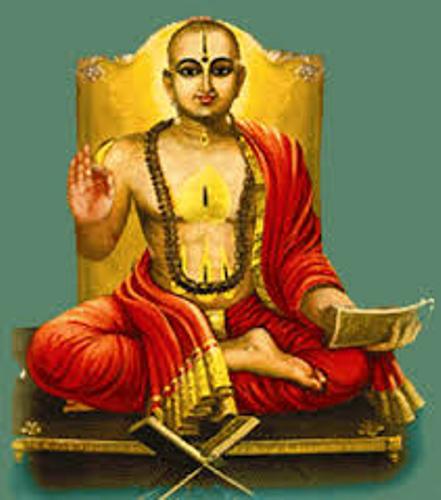The caste system separates many individuals of the Hindu religion into social classes known as varnas. This system, though traditional and thousands of years old, is considered “detrimental to the emergence of a modern society” and “leaves no scope for moral freedom,” as it divides people of the Hindu religion into four separate classes.1 These varna are known as the Shudra, Vaishya, Kshatriya, and the Brahmin. However, below these four social classes are the Dalit, who are also known as the untouchables. They are made up of mostly those who deal with things that would lead to ritual contamination, like dealing with dead bodies and the slaughtering of animals, and are the lowest of the people in the Indian class structure. The Shudra are the peasant and working classes; however, they are still among the lowest of the four social classes. The Vaishya are the merchants, traders, and cultivators of the land, the second lowest class of the caste system. Above the Vaishya are the Kshatriya or the warriors and aristocrats. Finally, the highest of the four varnas are the Brahmin, the class of Hindu priests.2

The caste system’s roots are found in the Rig Veda, which, originally, was not written down. It began as an oral tradition of the Indo-European peoples known as Aryans. However, after the Aryan migrations to India sometime between 2000 BCE and 1500 BCE, the caste system was not as highly structured as it eventually became in Indian society. But the superiority of the Brahmin caste was already well established, even in its earliest periods. Priests and families who were a part of the Brahmin varna were well distinguished from members of other varnas inferior to them.3
Through data from a major temple in South India in the year 1956, information was gathered regarding a few key features of Hinduism such as the gods and the priests. In Hinduism, the gods are extremely important beings and their existence is not something to be doubted. Therefore, the duty of their worship is placed with the Brahmins, or members of the highest varna. The responsibility of worship is crucial to the Hindu people, especially public worship. This particular type of worship is meant to satisfy the gods so that their sakti or power may be used to keep the world preserved and safe and the good of all people be ensured. The success of public worship is said to depend not only on the attendance of devotees, but mainly on the regular and correct performance of the worship by the Brahmin or priest leading the worship.4 In addition, Brahmins study information of the Vedas through oral traditions so it may be memorized.5 The Vedas are the four sacred texts of the Hindu religion and consist of religious knowledge, tradition, and thought. They include the Rigveda, the Yajurveda, the Samaveda, and the Atharvaveda.6
In order to perform the worship vital to the Hindu religion and work in a temple, proper initiation must occur. There are three levels of this initiation which must be passed: Samaya Diksa, Visesa Diksa, and Nirvana Diksa. Only after the individual has gone through the third level, Nirvana Diksa, will they have been fully initiated and able to lead worship services.7
It is clear that the jobs and responsibilities of the Brahmin varna is vital to the worship of the gods in the Hindu religion and vital to the protection of the well-being of human life.
- Anustup Basu, “The ‘Indian’ Monotheism,” boundary 2 39 no. 2 (2012): 113. ↵
- Jerry H Bentley, Herbert F Ziegler, and Heather E Streets-Salter, Traditions and Encounters, Fourth Edition, vol. 1 (New York: McGraw- Hill, 2016), 72. ↵
- Ibrahim Shah, “A Review of Hinduism and Its Historical Development,” Putaj Humanities & Social Sciences 20 (2013): 341. ↵
- C. J. Fuller, “Gods, Priests and Purity: On the Relation Between Hinduism and the Caste System,” Royal Anthropological Institute of Great Britain and Ireland, vol. 14, no. 3 (1979): 462. ↵
- Dorothy M Figueria, Aryans, Jews, Brahmins: Theorizing Authority Through Myths of Identity (Albany: State University of New York Press, 2002), 101. ↵
- Salem Press Encyclopedia, January 2015, s.v. “Vedas,” by Thomas F Barry. ↵
- C. J. Fuller, “Gods, Priests and Purity: On the Relation Between Hinduism and the Caste System,” Royal Anthropological Institute of Great Britain and Ireland, vol. 14, no. 3 (1979): 462. ↵



16 comments
Christopher Hohman
Nice article. It is always interesting to read about a belief system that is different than ours in the west. And the Hindu religion and caste are quite different than anything here in the United States or other western nations. Hinduism has always been used to prop up the existing social order in India. The use of the caste system is quite important because it makes social mobility difficult. Which is probably why it is so important that worship of the gods be maintained.
Roman Olivera
Many people seem to find the use of a classifying system as a bad thing for these people of this nation. What the don’t realize is that America has also used a system like thus without calling it this. Deciding what value a person has based who a person’s parents are. Isn’t this how the Kardashians and the Paris Hiltons of the world get their status or why some families stay in politics. Don’t be fooled by the name they give it because it exists all over the world. It not that these people become their parents it’s that they are given work opportunity and status because it, without earning anything. Isn’t this also how society has become so entitled to think they deserve what people have worked a lifetime for just because the person has a degree of education. Do they really think they are entitled to have what people have worked up to. Crazy to think that America is not so different.
Cristina Cabello
I really liked this article. In our Civilization’s class we discussed about the Brahmin Varna and the caste system. In a way the caste system can still be applied today. I find it really interesting how people socially make themselves seem better than others. I guess it needs to be done in order to make a civilized society. Overall this was a good article.
Regina De La Parra
Classifications of society were always very common in the past so it is not very surprising to learn about this. It is always sad though to learn that just because you were put into a classification you are badly treated and not respected. Also, it is interesting how the priests are considered to be the best classification because of the importance they place on religion. Great job Analina!
Samuel Ruiz
It is very interesting at somewhat unfortunate that the people of the caste system have to live through such a trap. Similar to social and economic classes of today, many people are born into a class that would ultimately determine the rest of their life on average. On another note, the Brahmins are an interesting class since they are not exactly what modern priests are like. I would have loved to learn more about their three steps in coming to lead worship, but overall it was a great article!
Oceane Roux
Thank you for this article! I find it very interesting and really sad at the same time that they used to classify people and decide a person’s value depending on who was his parents. I can’t think of how would our life be if we hadn’t any chance and hope to become someone else than our parents.
Crystalrose Quintero
Something to appreciate was that it provides ample information and really centralizes and focuses on the theme of class system. But at the same time, it is short and concise so is written in a straightforward manner. The single picture provided shows all that is being described in some sense. It displays worship by the brahmin varna. I enjoyed that the complex terms were easily defined.
Mario Sosa
The concept of the caste system is familiar to me but I never knew of the ‘untouchables’ that were considered even lower than the peasants. It is interesting how despite the power and money that the aristocrats displayed, they were still inferior to the priests. Reading this has gotten me curious about the three initiation steps required to partake in priest work.Nicely done research, good job!
Zaraly Frasquillo
I have a lot of Indian friends and I love to know about their culture and their religion, but they never really talk about the caste system. I found this article super fascinating, because honestly we- as Americans- do not realize how privileged we are that we all have the same opportunities that a rich man does (well for the most part). You did a great job in organizing this article, super easy to follow each main idea.
Christian Lozano
It is sad to see a religion which from the beginning of the life of a human being, determines their place in the world. It saddens me to see there is such a thing as a caste system in the world, although it must be nice for the Brahmin Varna.